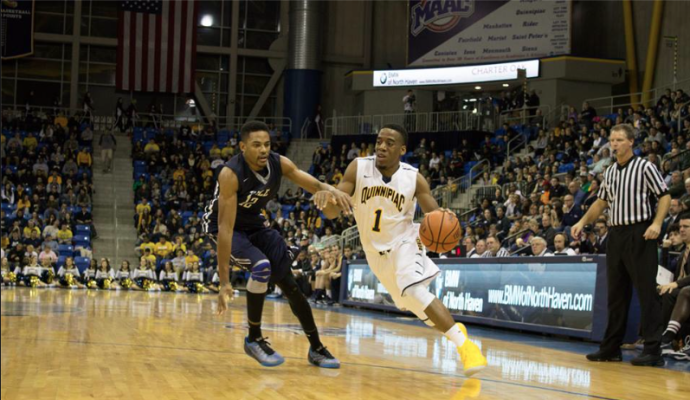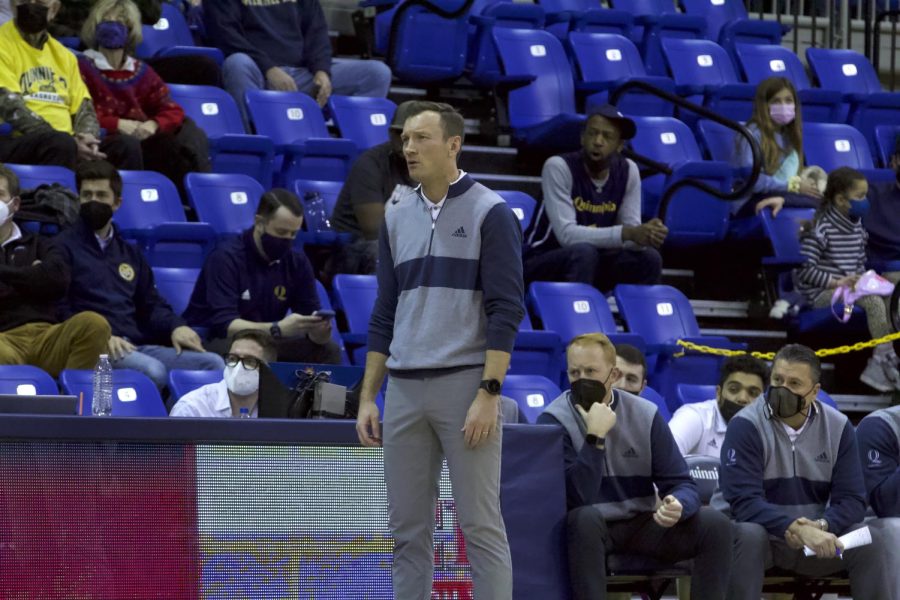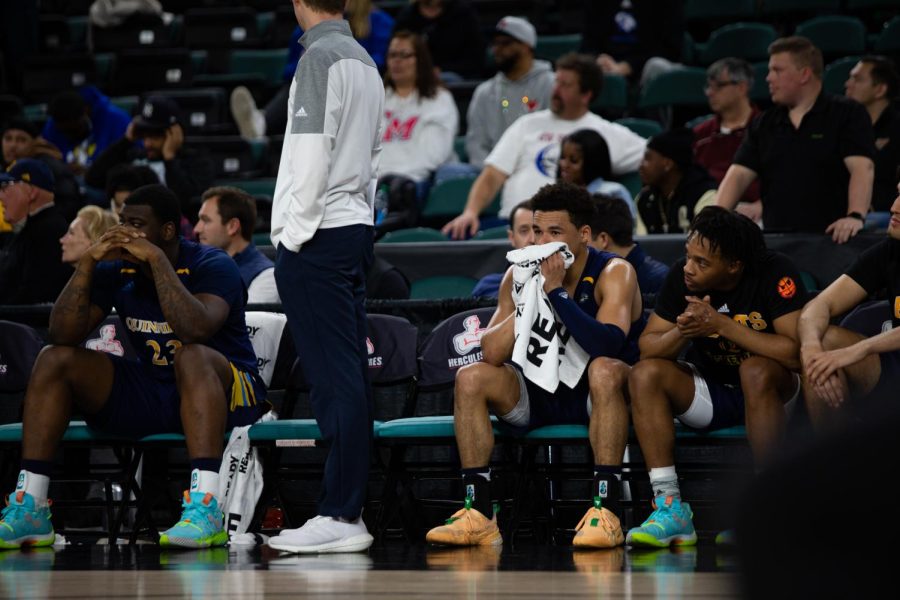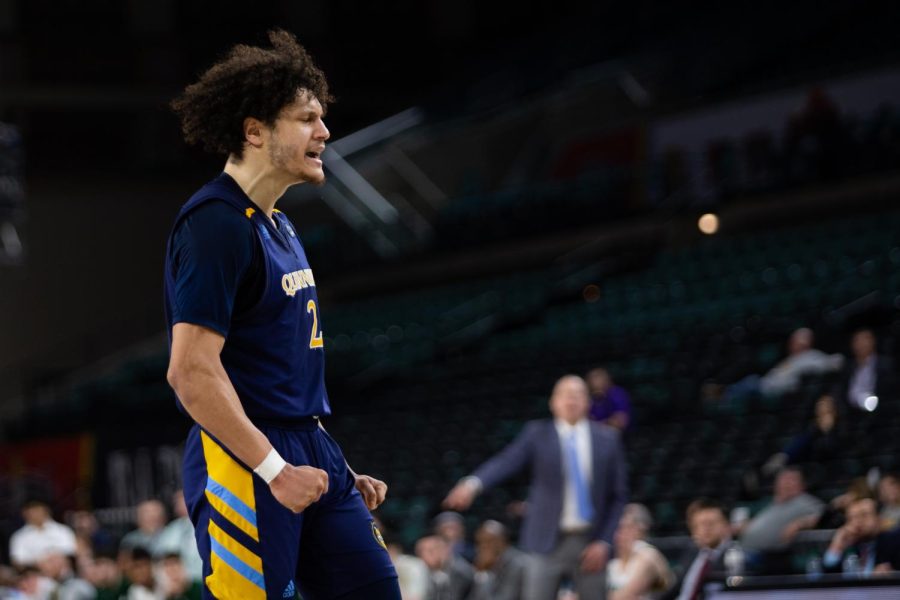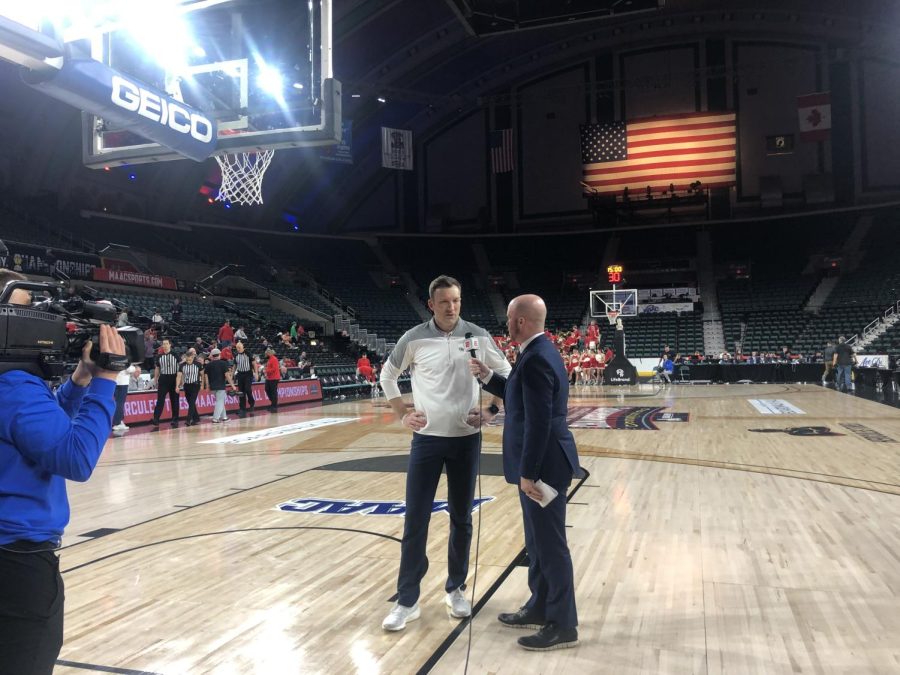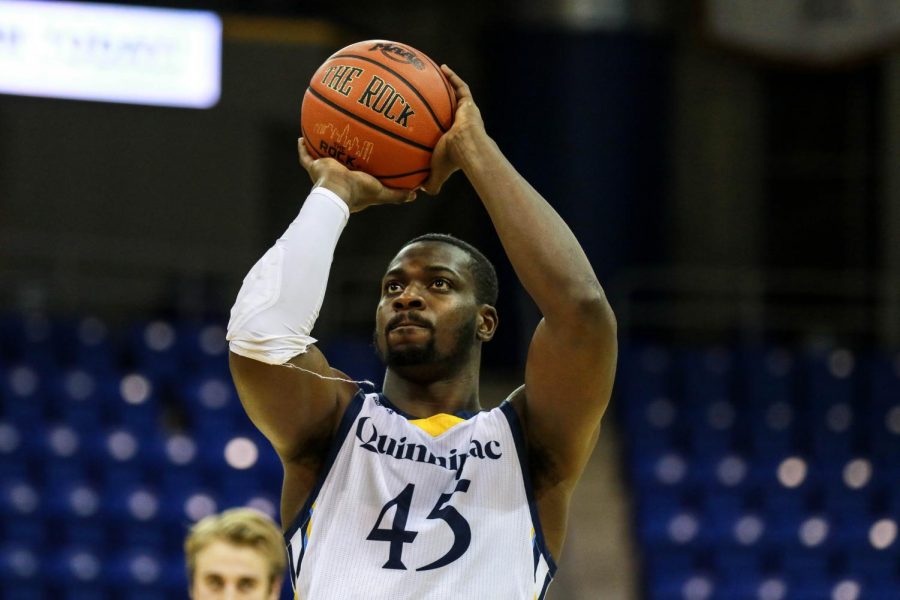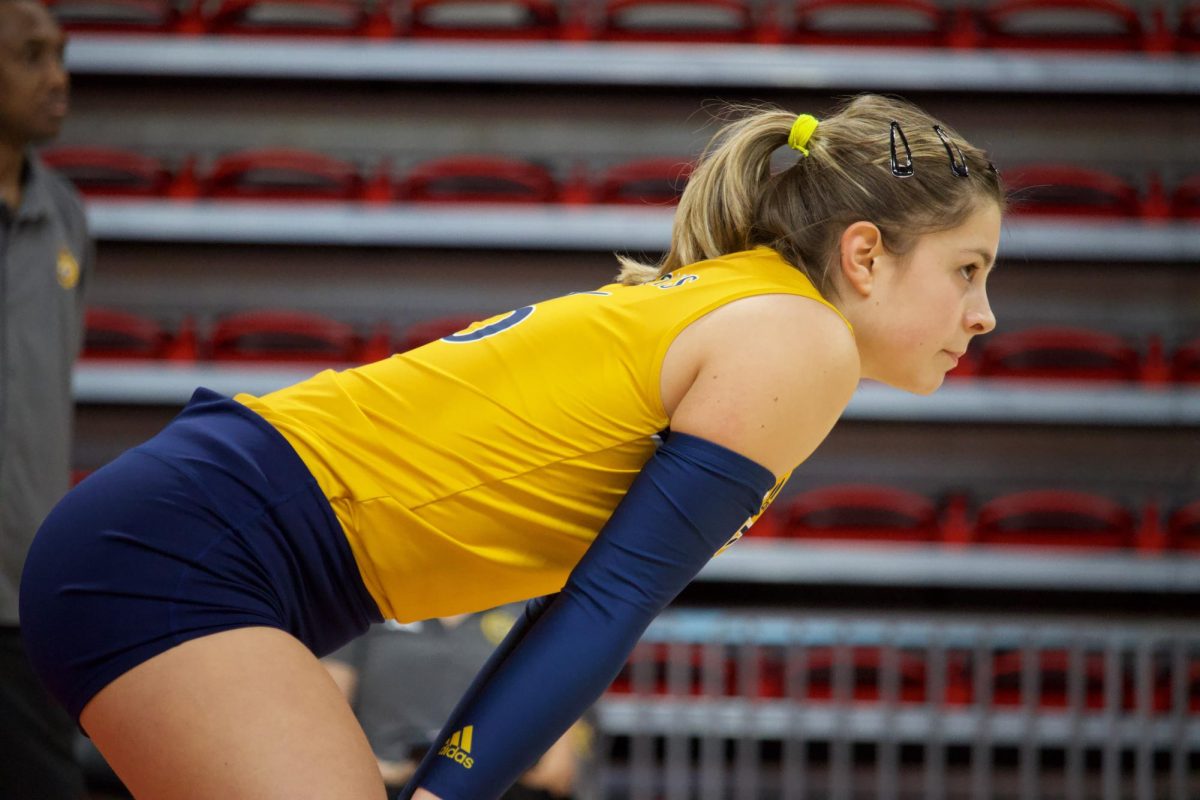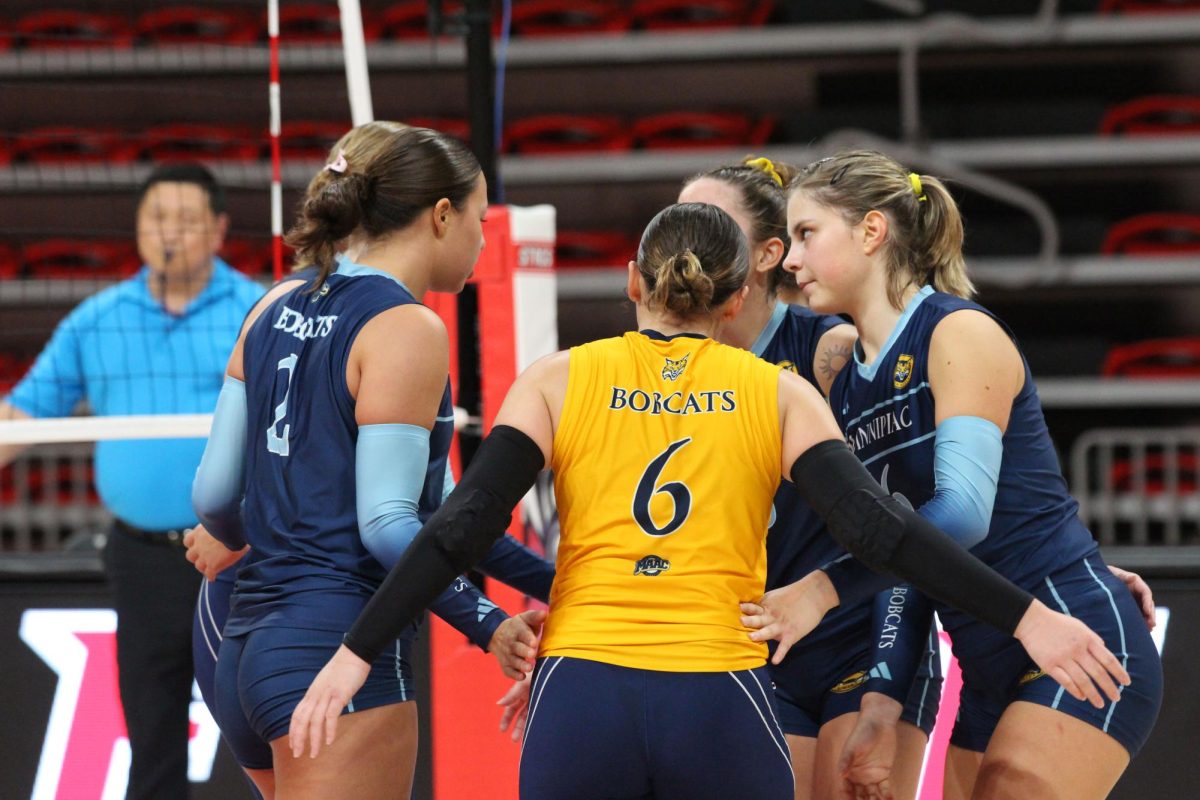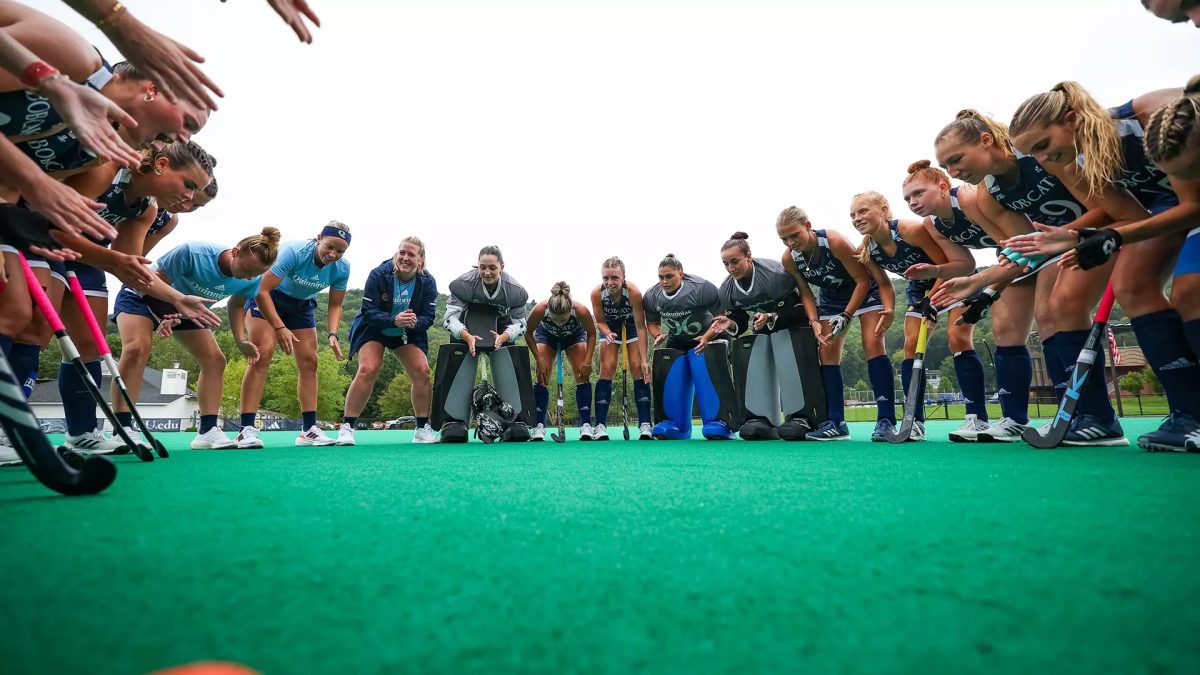Photo courtesy: QBSN
By Jon Alba
I can recall Quinnipiac forward Zaid Hearst’s big outing against Canisius in late-January vividly.
The Golden Griffins were, for all intent and purposes, outplaying the Bobcats for most of the first half. Star forward Ousmane Drame, already battling nagging injuries, was on the bench for much of the action with four fouls and just six points. The usually-reliable Ike Azotam contributed 12 points, but also had four fouls.
Ultimately, Quinnipiac would lose the game 86-74. But that’s not what people, on both sides of the ball, were talking about.
Hearst dropped 33 that night. Also on four fouls.
It was the coming out party for Hearst, the night the Metro Atlantic Athletic Conference began to take notice. And that’s not a knock on the 2014-2015 team captain; to that point in the season, he only had five single-digit-points performances. But it was the night he outscored one of the nation’s best, Billy Baron, 33-to-20, people began to pay attention.
Then came Friday night’s Connecticut 6 Classic. And perhaps the Asbury Park Press’ Josh Newman sums it up best.
Are we giving MAAC Player of the Year to Zaid Hearst now, or are we waiting?
— Josh Newman (@Joshua_Newman) November 15, 2014
The Hearst people saw Friday was on another level of mid-major player. It was Quinnipiac’s first game of the season, a matchup against a touted Yale team expected to make noise in the Ivy League this season. All-in-all, a meaningless game in the sense of record, but after the Bulldogs took down the Bobcats at the buzzer in the first round of the CollegeInsider.com Postseason Tournament last year, pride played a factor.
His first half was electric. Step-back jumper after step-back jumper. It was rhythmic, and not hard to see coming. Take the pass, dribble forward, pull back and shoot. It’s the shot that made Kobe Bryant who he is today. The angle mattered not. And if there was any remote separation between he and a defender from beyond the arc, he popped one.
That was good for 17 points, three-of-five from the perimeter.
It made me think back to the first time I ever covered Hearst, the 2011 Connecticut 6 Classic at Mohegan Sun Arena. It was his first game at Quinnipiac, and my first on the beat (on this particular evening, I was there for the Quinnipiac Chronicle). The story surrounding the game had been the impending criminal cases brought against several Quinnipiac players, namely star guard James Johnson and Azotam. Johnson would end up being suspended for the game, and it then came down to who would step up in his place.
I’m not going to mislead and tell you Hearst filled in and led the Bobcats to a win against Fairfield in his first game. Quinnipiac lost, and the freshman who stood out with 12 points, Nate Gause, isn’t even at the school anymore. But Hearst’s hustle opened eyes, logging the third most minutes (32) on the court that evening while scoring seven points. You could look at him and know he was going to be an important figure during his tenure, without a doubt.
But to this extent?
The second half of Friday’s contest saw Quinnipiac erase what was at one point a 31-20 deficit and turn it into a lead. He quietly contributed 12 to the score, in the same off-shot fashion he had before, but his work off the ball and against the tuned-in Javier Duren impressed the most. Duren put pressure on Hearst throughout and dropped 26 of his own in what, at one point, seemed to be an even more dominating performance. But if the Quinnipiac senior struggled, he focused on setting high screens or creating isolation for the rest of his teammates.
As the game fizzled into overtime, he continued to chip away. As his shots began to stop falling and with a seemingly off night at the charity stripe (60 percent, whereas he went 82.8 percent from the line last year), he focused elsewhere. He began to crash the boards harder in the extra half, which after a near buzzer-beater from Hearst, eventually turned to double overtime. He let his teammates do the work, creating open space for guys like Justin Harris (12 points, most of which were down the stretch) and separation for guards Evan Conti and Kasim Chandler to work with.
By night’s end, Quinnipiac won 88-85.
And before you knew it, and many did not realize at the time, Hearst had 34 points, a career-high, and 11 rebounds. A double-double, on just two fouls.
“Actions speak louder than words,” Quinnipiac head coach Tom Moore said after the game. “I’ve named one captain here in seven years. I can’t say any more than that.”
Even in his all-star performance, the night didn’t belong to Hearst, at least in his mind. As the team celebrated on the court, Harris received the fanfare for his overtime heroics, and Hearst joined in to give recognition to his fellow senior’s big night.
The two made their way to the press conference, looking winded but satisfied. Hearst had just played 49 minutes, the most of anyone on the court, and I asked about whether playing that much this early in the season left them tired.
The Bethesda, Maryland-native shrugged it off, and said he was going to lift weights right after they got done with questions. This, after having the best statistical game of his career.
“He spends more time stretching, preparing, he eats right, he sleeps right, he keeps the wrong things out of his body,” Moore said. “It’s a whole deal for him. I hold him up on a pedestal.”
And if Friday was any indication, the MAAC will soon too. Hearst earned a Preseason All-MAAC Second Team nod earlier this month, so it’s not as if people are unaware of his stature. But as conference play approaches in a few weeks, it won’t just be the highly-recognized Drame the league will be talking about.
It’ll be the man they call “Z” as well.


